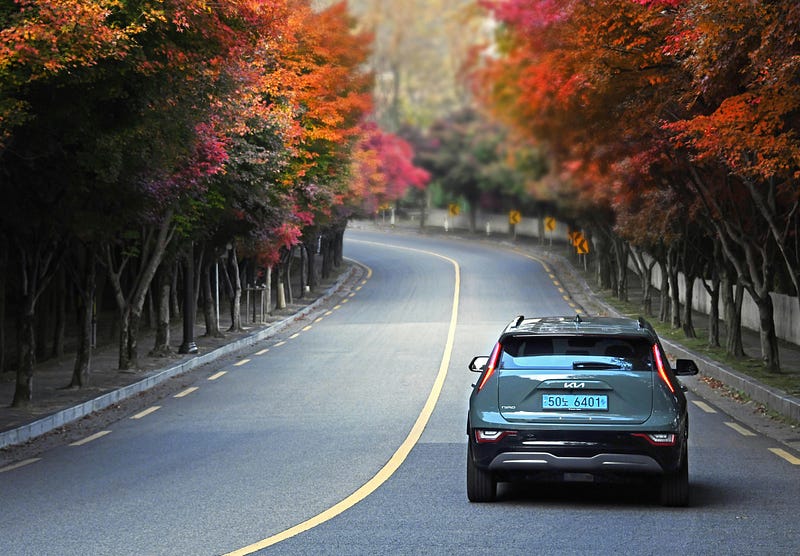Revolutionary Wireless EV Charging: The Future of Eco-Friendly Travel
Written on
Chapter 1: The Challenge of EV Charging
While electric vehicles (EVs) are gaining popularity, the challenge of charging them remains a significant barrier for many users. For those who rely on street parking, charging at home becomes nearly impossible. Additionally, even top-performing EVs can struggle with long-distance travel and towing. However, an innovative technology that was once dismissed may pave the way for solutions to these issues, enhancing the sustainability of EVs and enabling long-haul electric trucks.

Section 1.1: The Evolution of Wireless Charging Technology
Initially, wireless EV charging was considered more of a novelty than a practical solution. BMW's early attempts resulted in a system that provided a meager 3.2 kW of power, which was inefficient at best. Presently, the fastest wireless charger available is the Hevo Jobbie, offering a still slow 12 kW.
However, researchers at Oak Ridge National Laboratory (ORNL) have made significant strides in this field. They tested an experimental wireless charging system that utilized a "lightweight polyphase electromagnetic coupling coil design." This advanced system successfully delivered 100 kW of power over a 5-inch gap, achieving an impressive efficiency of 96%. Peak charging rates reached 120 kW, suggesting even greater potential for future developments.
Subsection 1.1.1: Implications of High-Power Wireless Charging
Imagine the implications of such a powerful wireless charger: it could provide enough energy for an EV to travel 350 miles within just one hour. This advancement transforms wireless charging from a mere gimmick into a revolutionary technology.
Section 1.2: Transforming Urban Charging Solutions
Street parking poses unique challenges for EV charging. Installing individual chargers in every parking space could be visually unappealing and disrupt the flow of urban life. Implementing fast wireless charging systems in street parking areas could provide a practical solution.
Chapter 2: The Wireless Electric Road System (wERS)
One of the most remarkable applications of this technology is the concept of a Wireless Electric Road System (wERS), or wireless charging lanes. These systems involve placing wireless charging pads beneath the road surface. As an EV passes over these pads, they activate and transmit power, turning off as the vehicle moves to the next pad. This method maintains high efficiency and power transmission.
The first video explores why electric vehicles (EVs) will become a practical choice for consumers in the coming years, highlighting advancements in technology and infrastructure.
Section 2.1: Leading the Charge with Electreon
Currently, Electreon is at the forefront of wERS technology, capable of delivering 35 kW to moving vehicles and up to 100 kW for larger vehicles like buses and trucks equipped with multiple receivers. For context, a typical EV consumes 18.6 kW at 70 mph, while an electric semi-truck uses 140 kW at 65 mph.
This means that regular EVs can receive a trickle charge while driving, and larger vehicles can mitigate their high energy consumption.
The second video discusses predictions from ARK Invest CEO Cathie Wood, who asserts that the majority of car sales will transition to electric vehicles within the next five years, emphasizing the rapid growth of the EV market.
Section 2.2: The Future of Long-Distance Electric Travel
Imagine the impact of integrating ORNL's 100 kW wireless technology into Electreon’s charging lanes. A typical EV traveling for 30 minutes at a steady 70 mph could consume 9.3 kWh while receiving an additional 50 kWh wirelessly, resulting in a net gain of 40.3 kWh—enough energy for approximately 160 miles of driving. Similarly, electric semi-trucks could gain an impressive 32.7 miles of range after just half an hour of travel.
If such wireless charging lanes were to become commonplace on highways, it would revolutionize EV travel. Smaller batteries would suffice, reducing the environmental impact associated with battery production. Moreover, long-haul electric logistics could become a feasible reality, with trucks fully recharged by the time they exit the highway.
Conclusion: A New Era of Possibilities
While the theoretical potential of this technology is promising, practical implementation remains uncertain. Questions about costs, integration with existing systems, and government support must be addressed. Nevertheless, the advancements made thus far signal a significant step forward in making electric vehicles more accessible and eco-friendly.
Thank you for your interest in this topic. Support for content like this is crucial, and if you'd like to engage further, consider following my project, Planet Earth & Beyond, or connect with me on social platforms like Bluesky or X.
(Originally published on PlanetEarthAndBeyond.co)
Sources: ORNL, Techradar, Hevo, BBC, Electreon